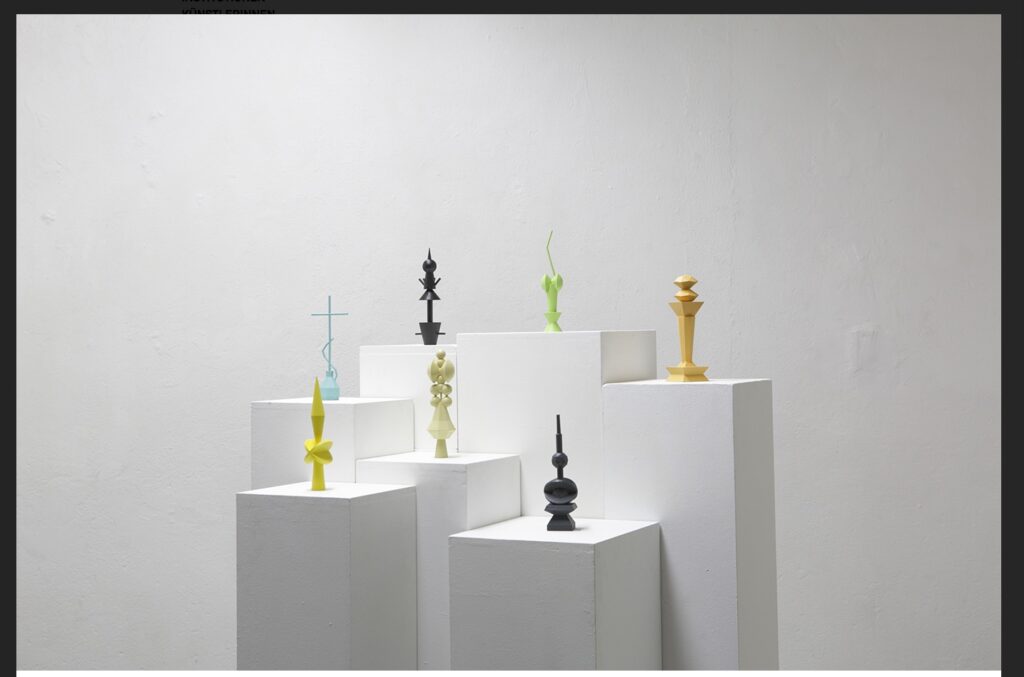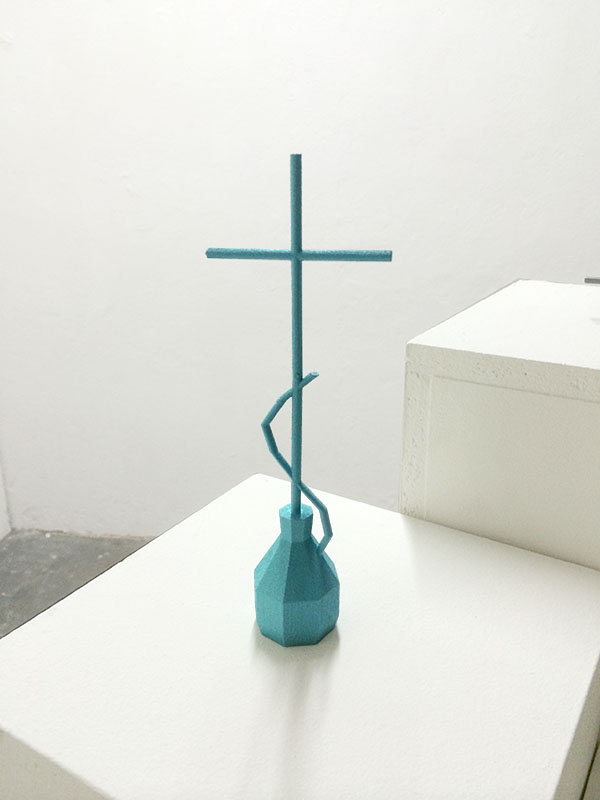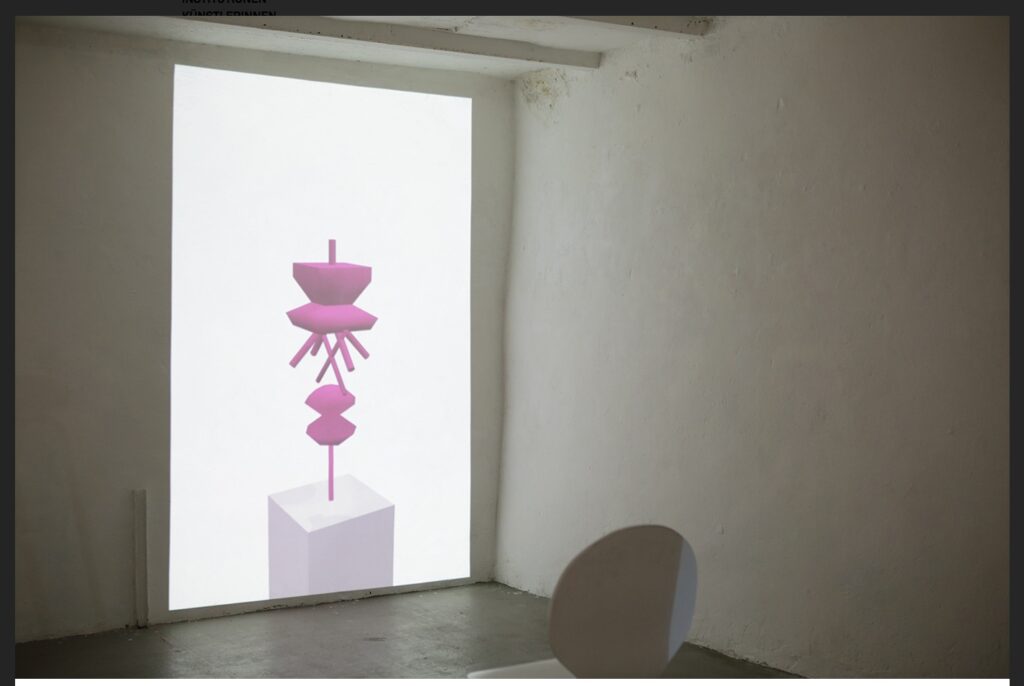Portrait über meine Arbeit auf Telebasel bei 360 Grad Kultur, 16.11.2003
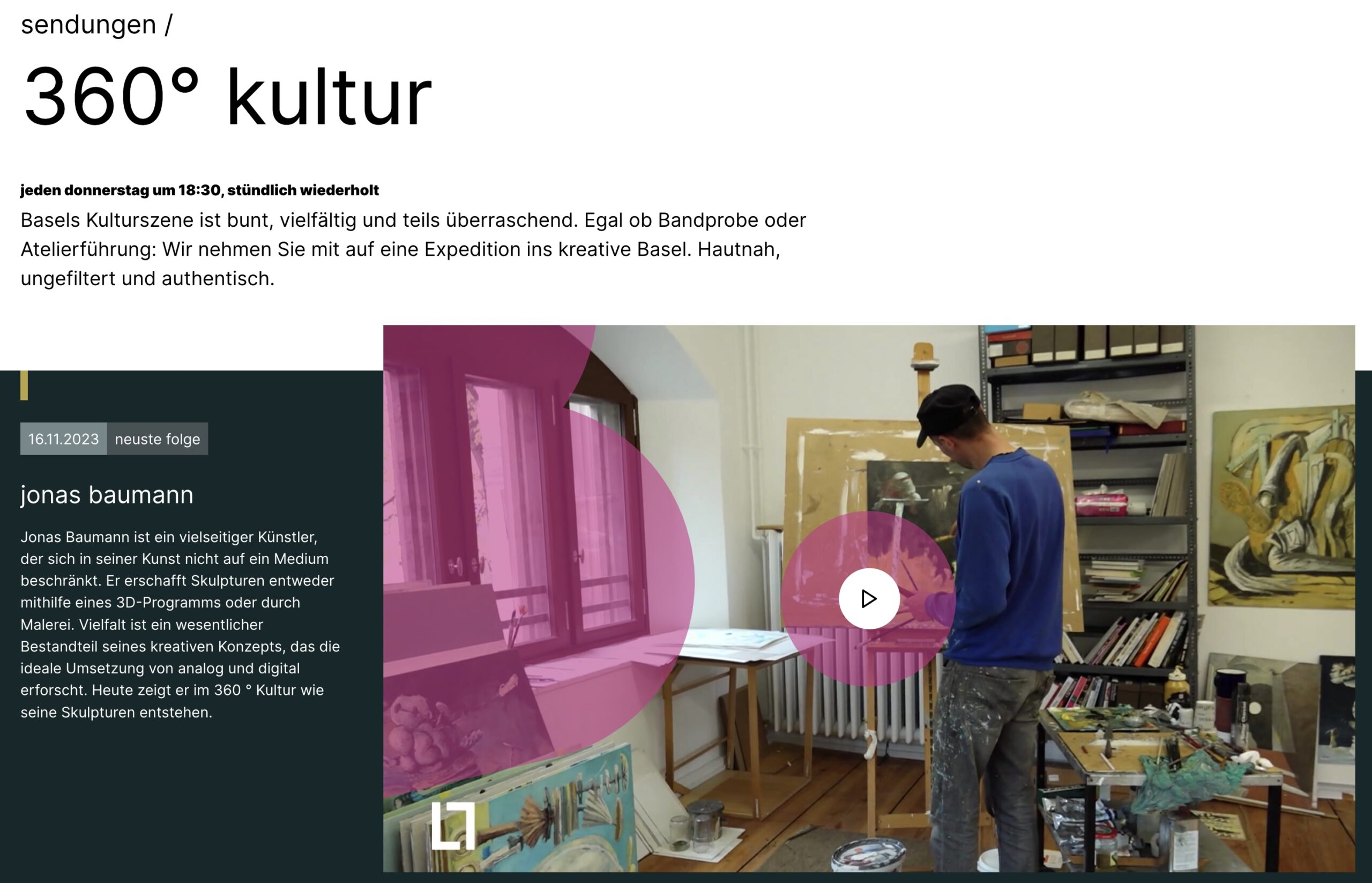
39. Kantonale Jahresausstellung, Kunstmuseum Olten, 26.11.23–28.1.24
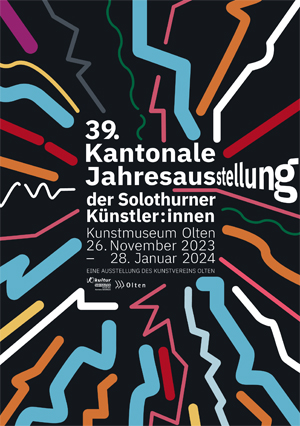
10 pages feature @ Revie L’ouroboros, Lyon, 7/2023
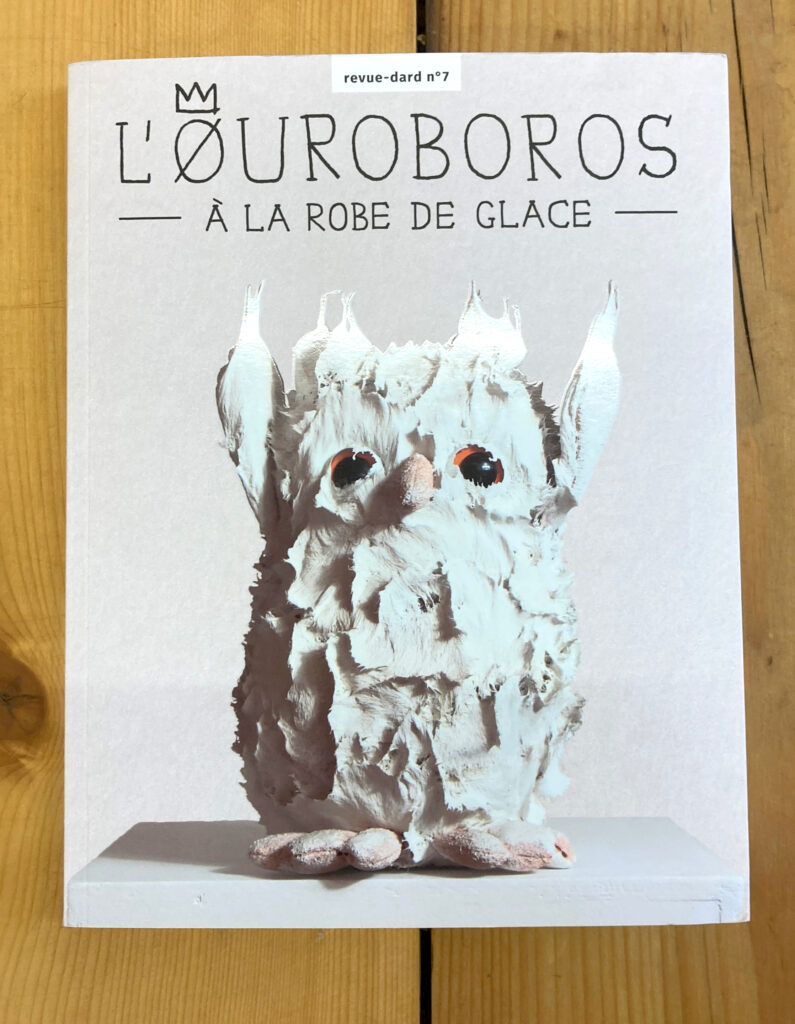
Group Show @ Licht Feld Gallery, Opening 2.6.2022

„Loneliness“, Videocity in Dresden and Basel, 2021 and 2022

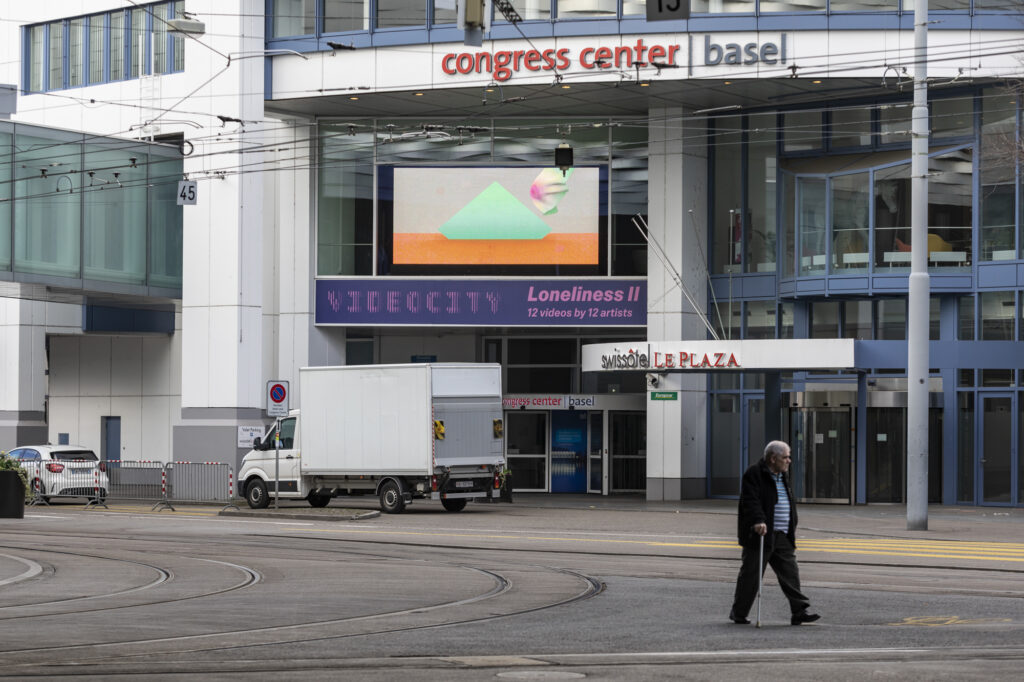
Jahresausstellung Kunstmuseum Olten, 2021
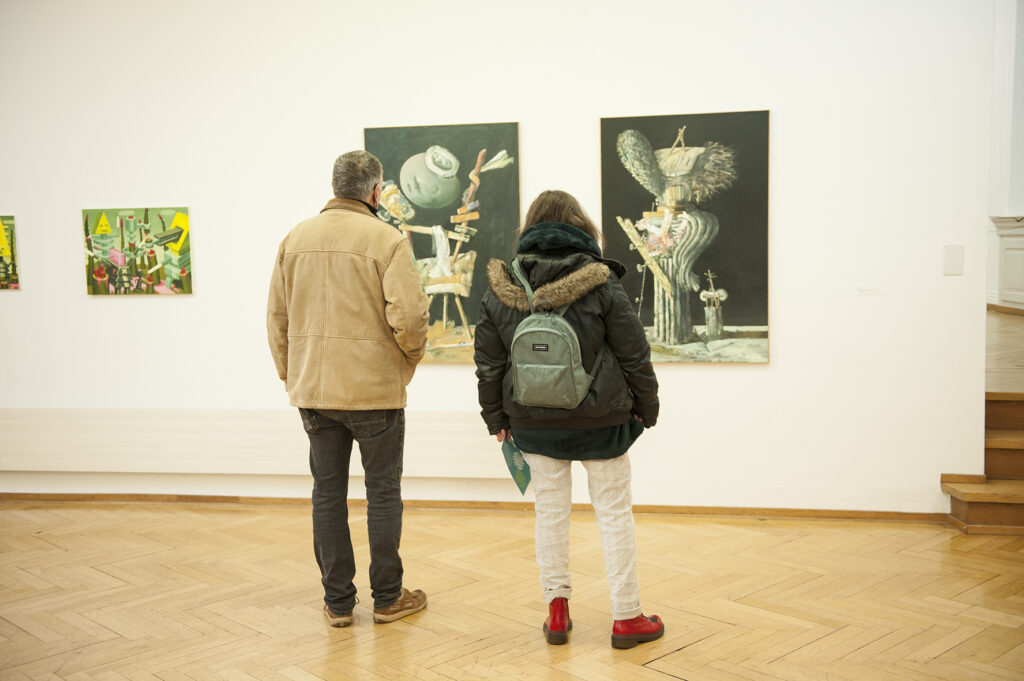
Art Miami, with Licht Feld Gallery, Basel, 2021

Digital Art Month Paris, represented by elementum.art

Digital Analog Balance, Solo Show, Licht Feld Gallery, 2020
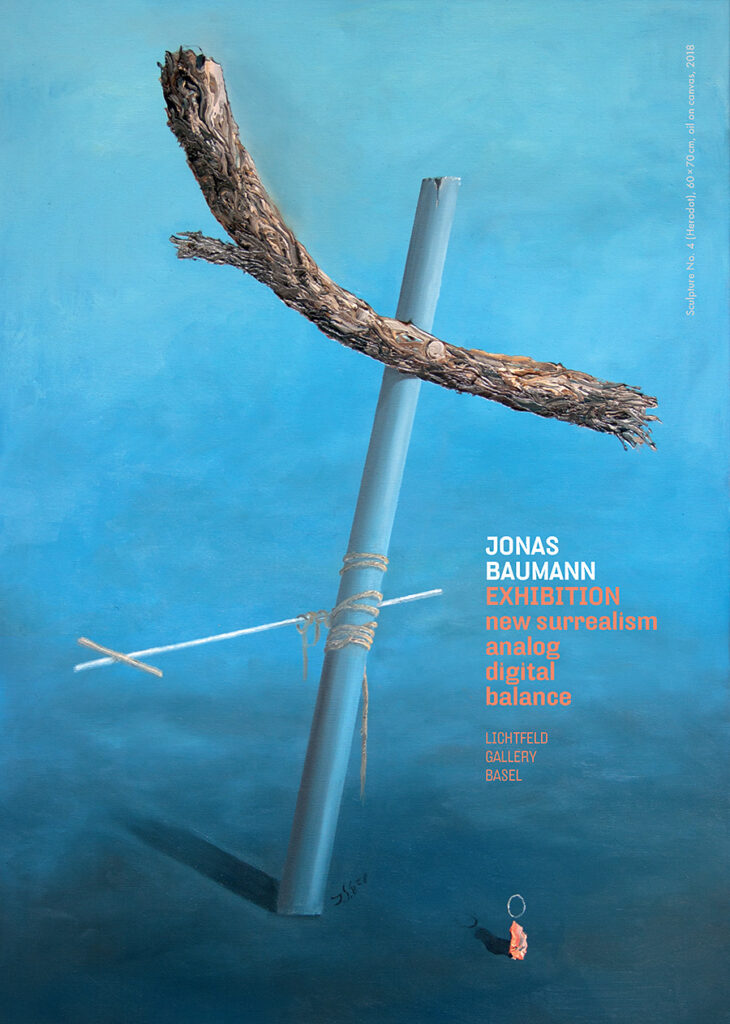
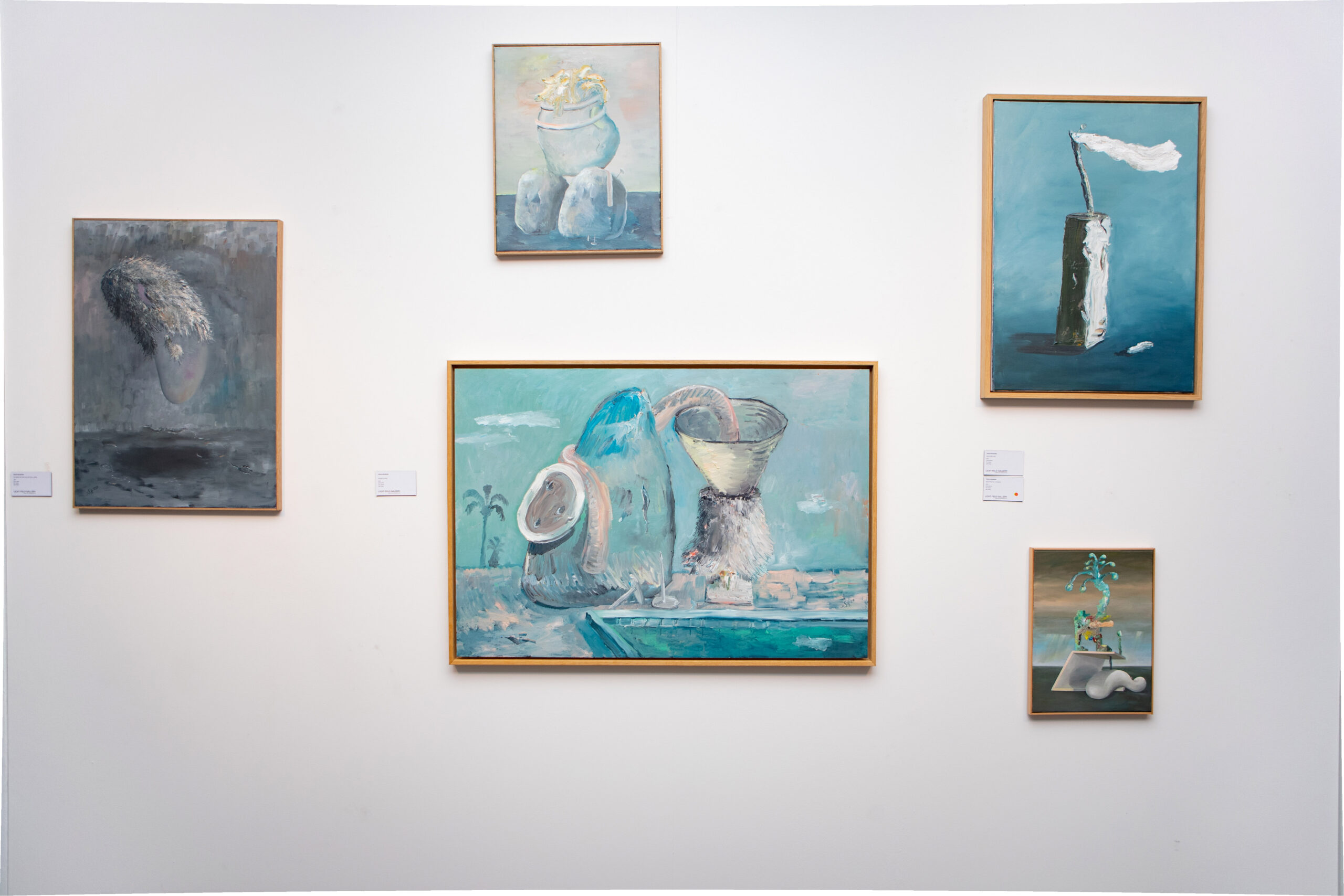
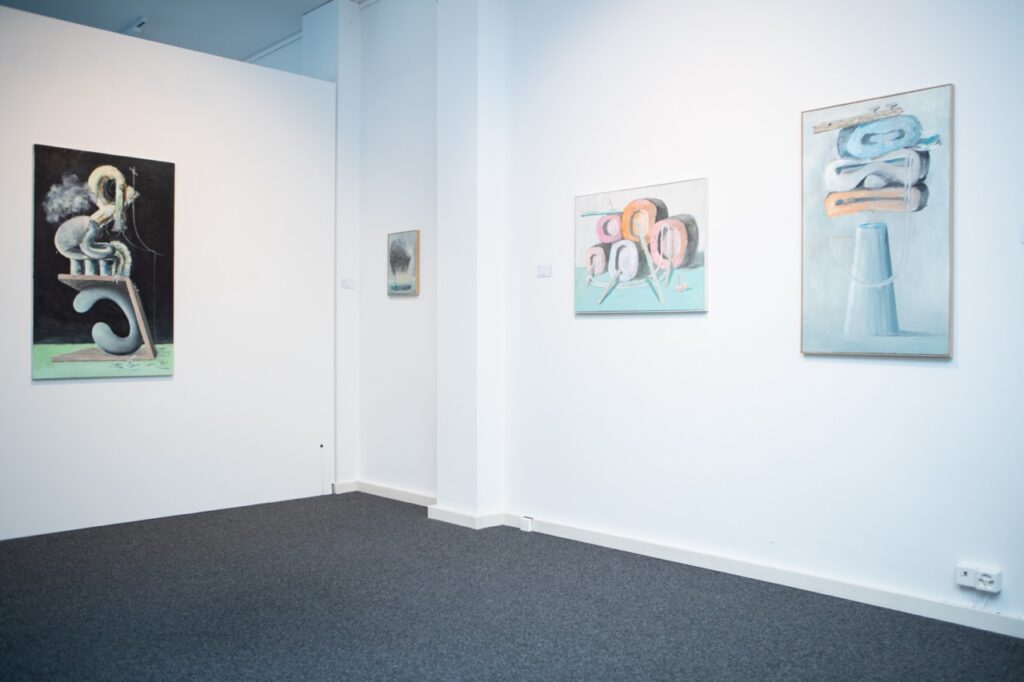
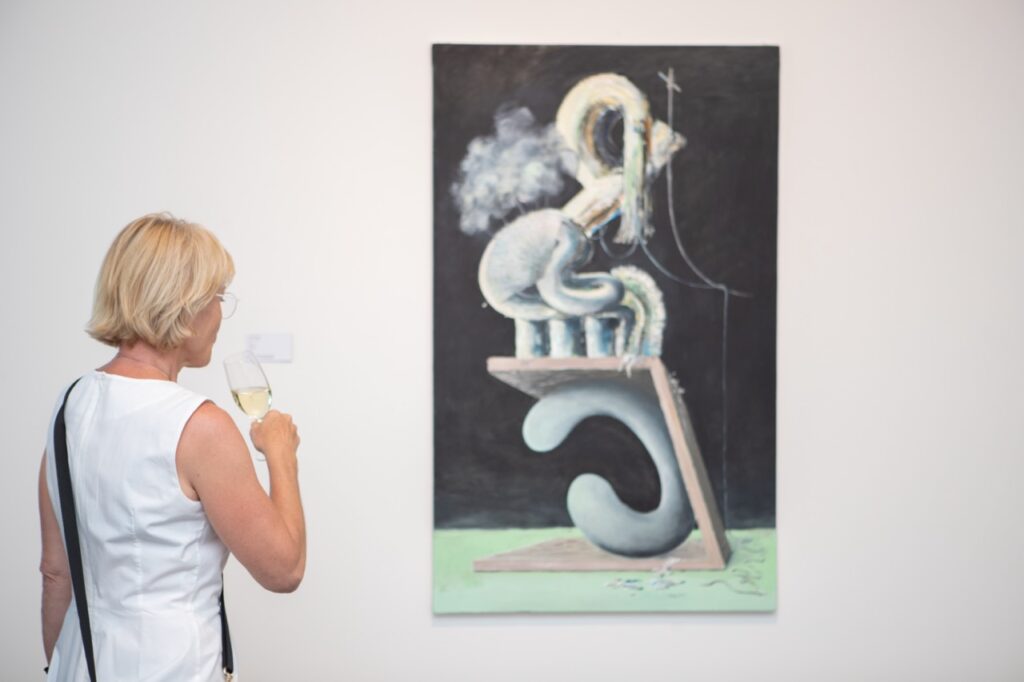
I Ever See, Poster Edition, June 10 — 24, 2020, in the city space of Basel, for I Never Read

Art Miami with Licht Feld Gallery

I was invited to the Elementum Podcast where we talk about my digital work.

Villa Renata, Heute Malen Wir, 2021
HEUTE MALEN WIR – aber nicht nur heute, sondern sie haben immer gemalt und werden auch weiter malen. Solange es Farbe, Pinsel und Leinwand gibt, wird gemalt! In dieser Ausstellung werden 10 unterschiedliche Positionen gezeigt. Was die KünstlerInnen gemeinsam haben, ist die Freude an der Malerei, am Akt des Malens, und mit der Malerei etwas zu vermitteln. Wenn man sich aber näher mit ihren Sujets und Techniken beschäftigt, entdeckt man, dass sie alle von der Dialektik High/Low gespeist werden. Die Faszination vom Spannungsverhältnis zwischen dem Trivialen und dem Hehren teilen alle KünstlerInnen in dieser Ausstellung. Ihre Inspiration und Vorlagen sind mannigfach und sie sind überall zu finden: in Schriftfragmenten und Figuren aus der Werbe- und Medienlandschaft, in Graffitis im Stadtraum, urbaner Architektur, Kunstgeschichte, abstrakten Bildern, malerischen Prozessen, Kindheitserinnerungen.
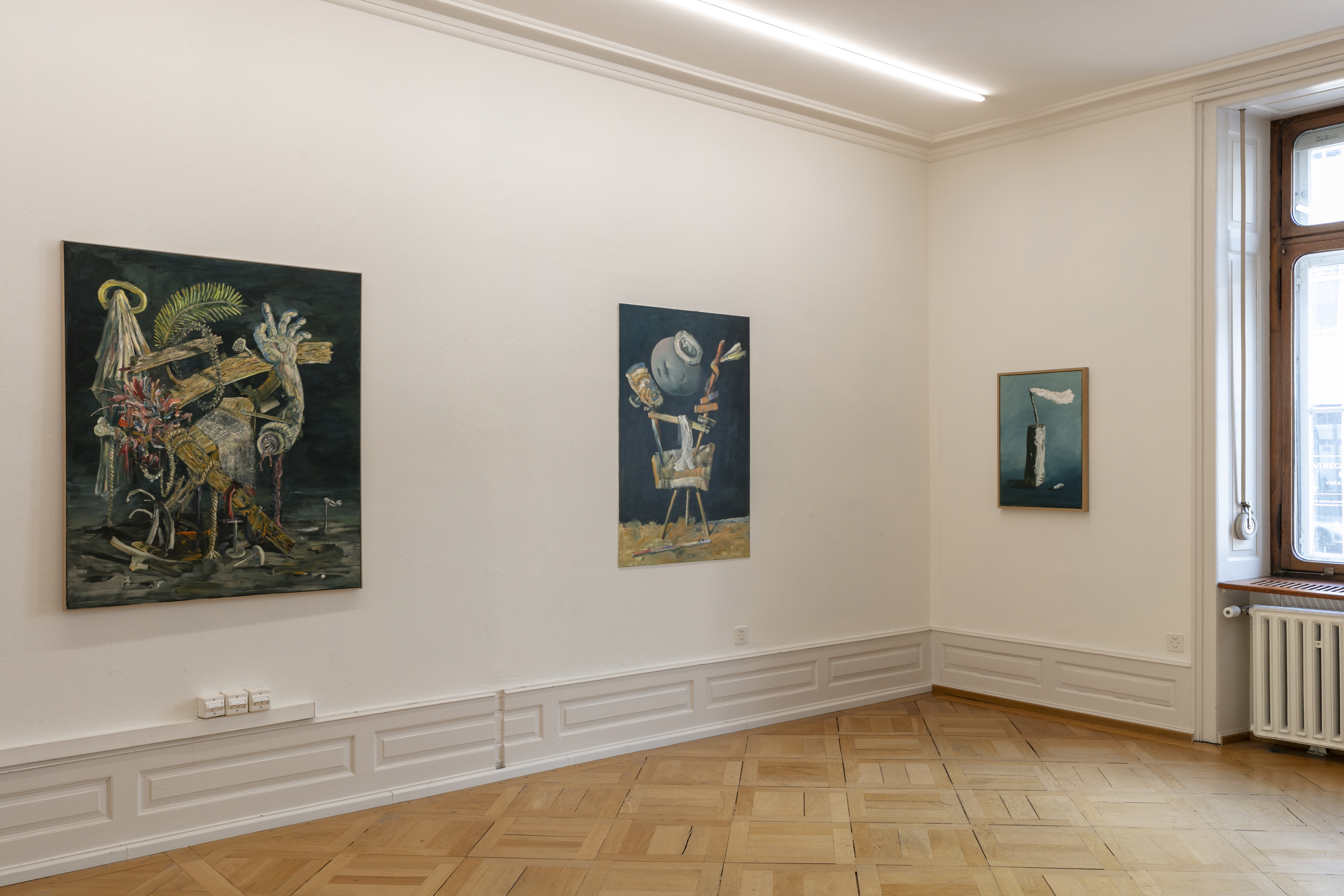
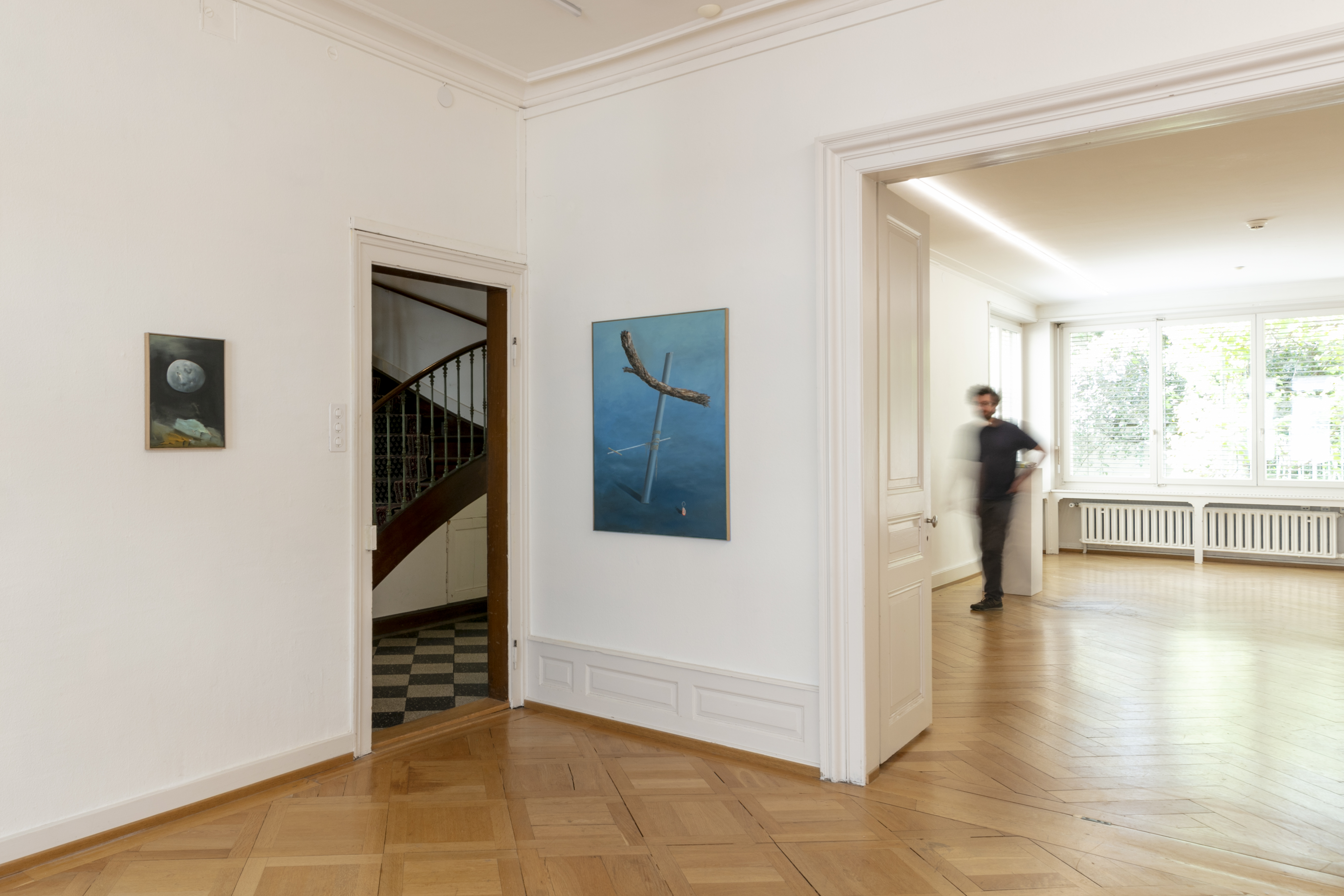
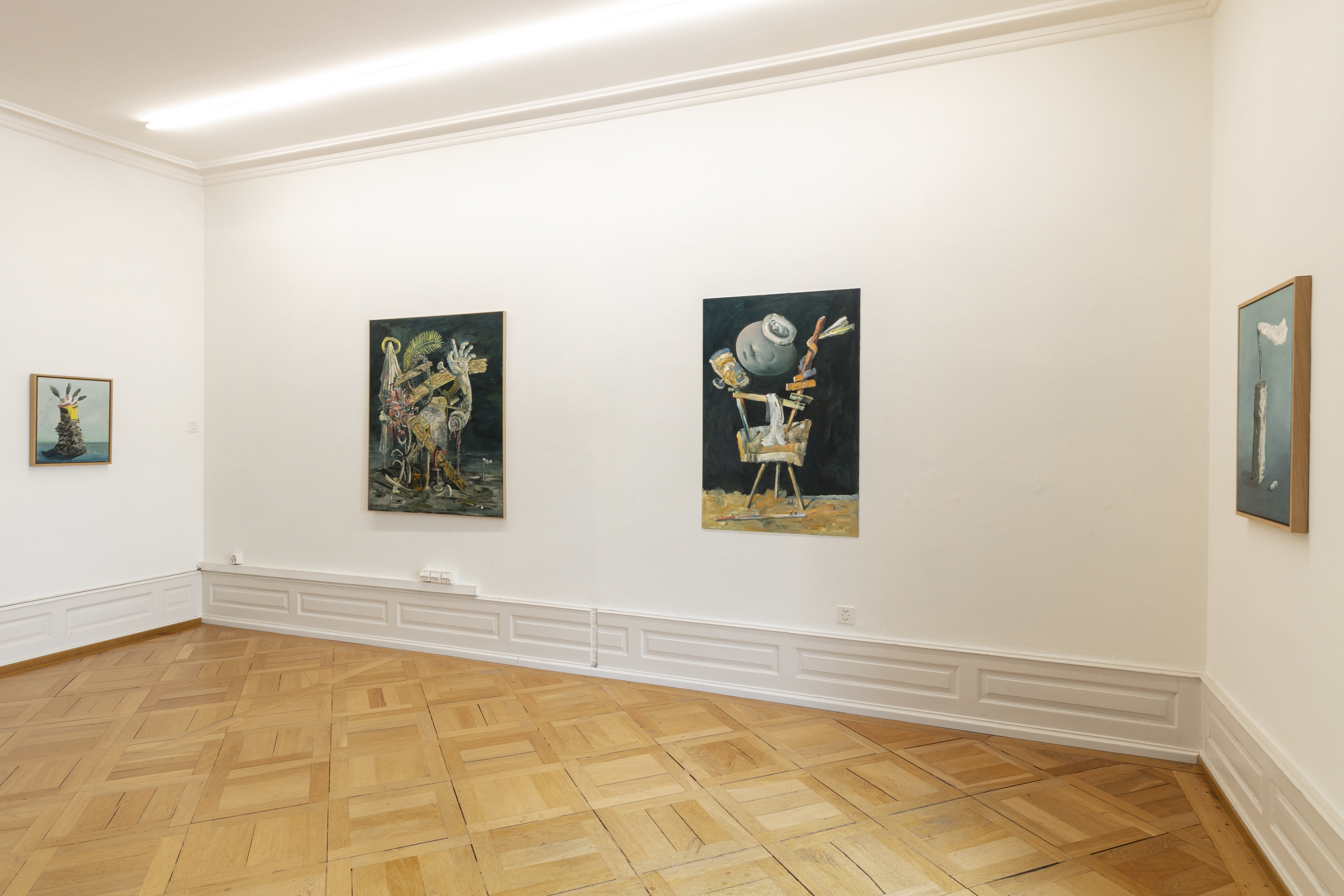
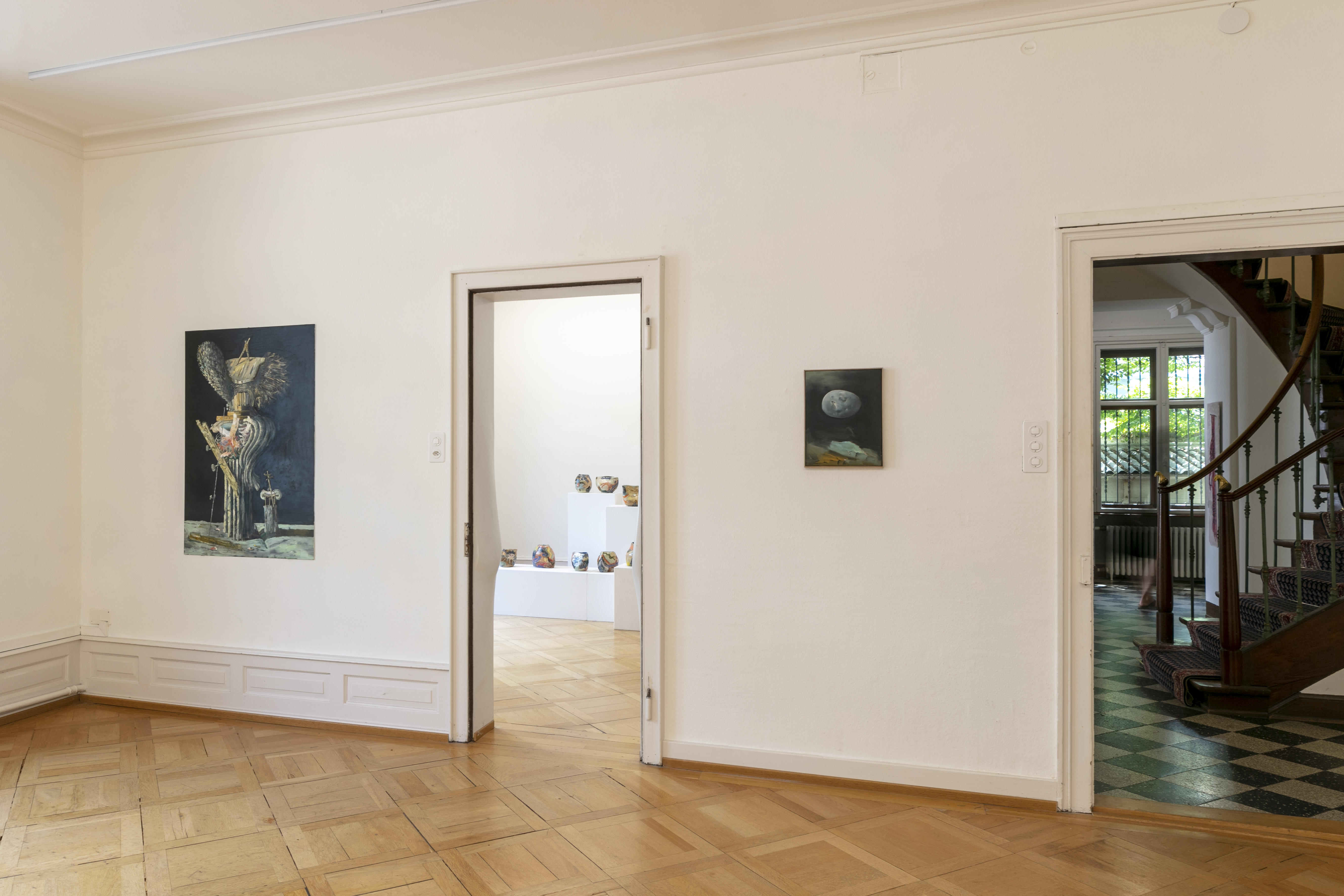
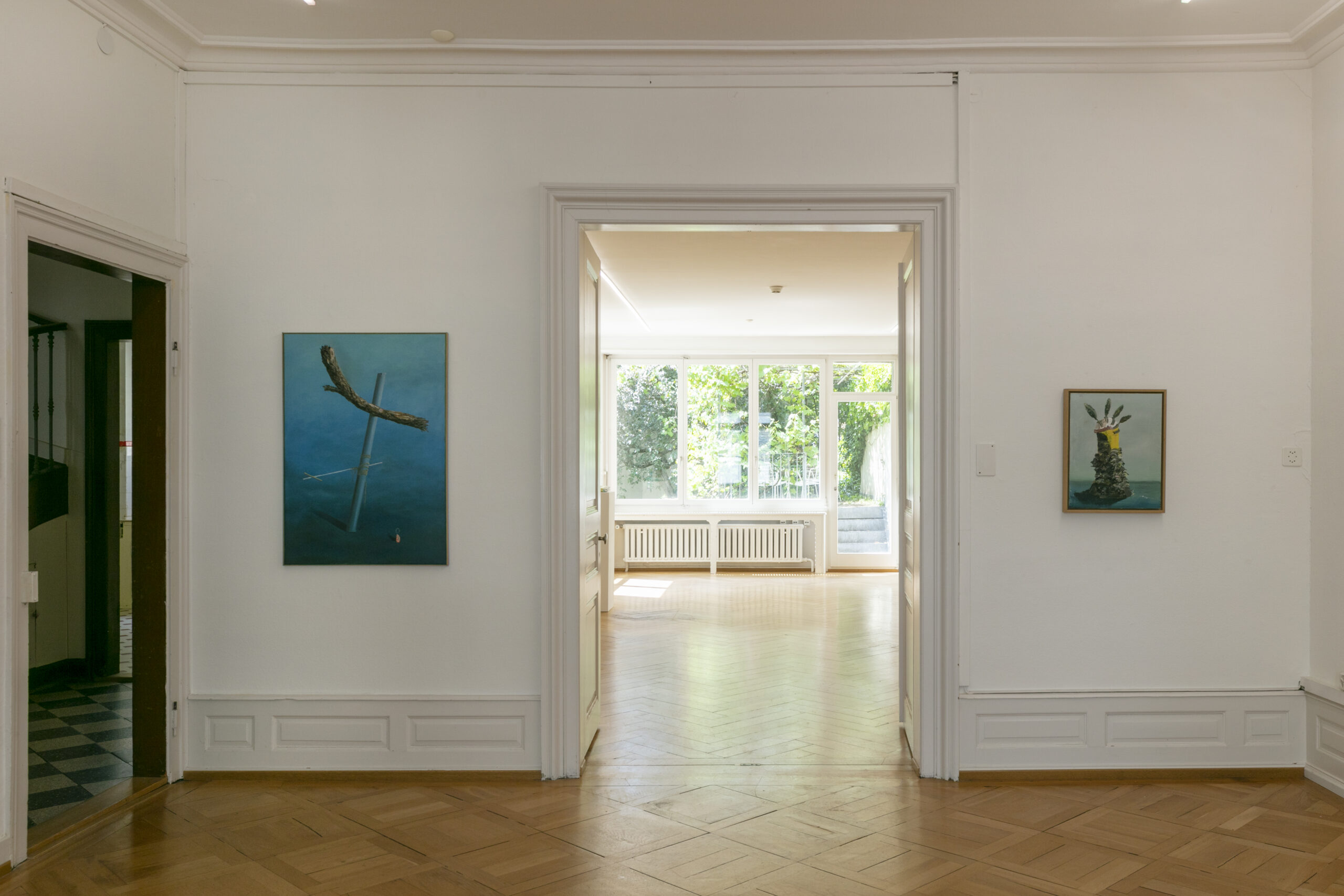
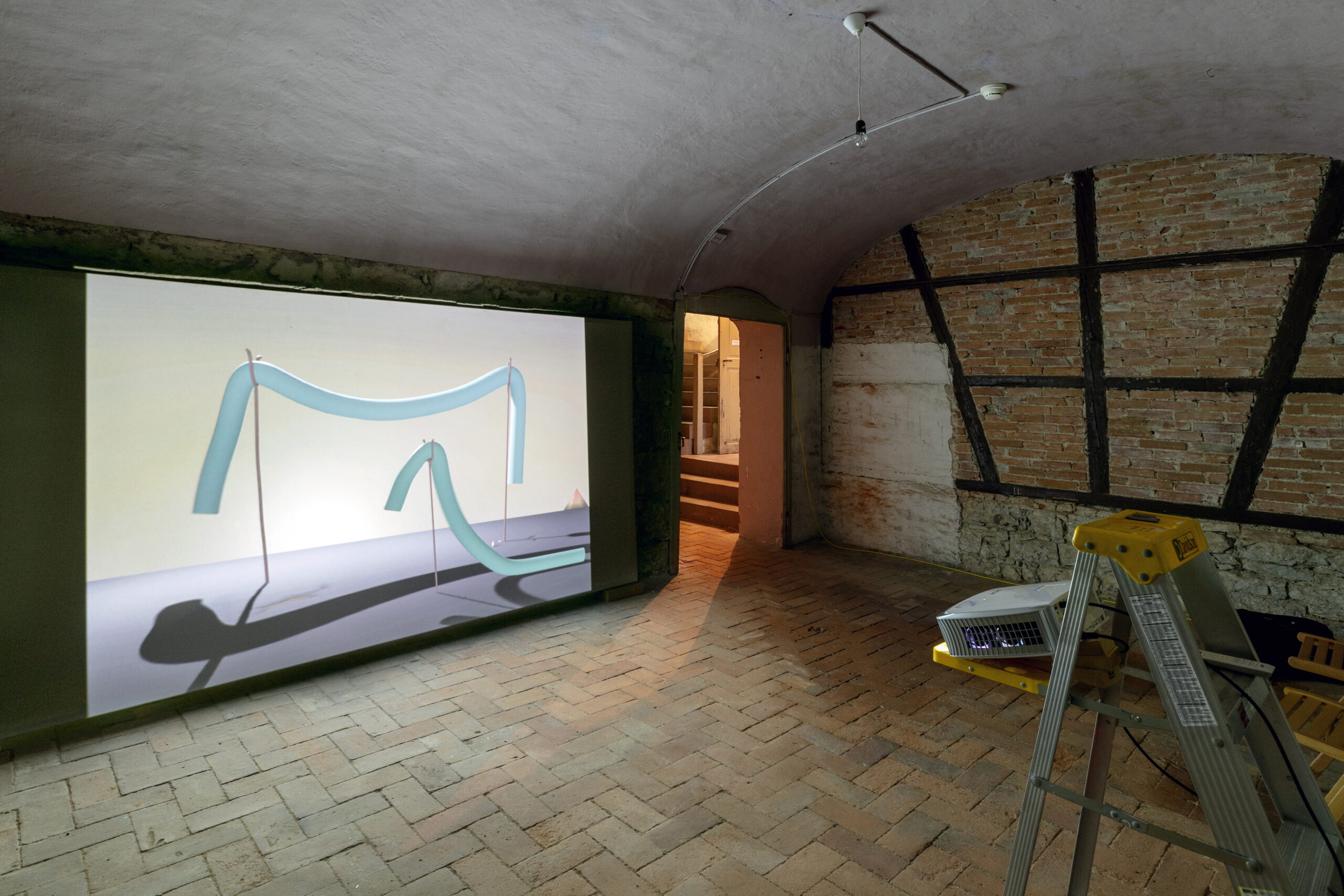
Fabio Luks (CH), Geneviève Morin (CH), Jonas Baumann (CH), Mariejon de Jong-Buijs (NL), Paul Takacs (CH/H). Sara Gassmann (CH), Stefan Auf der Maur (CH), Tomaž Gnus (CH), Yota Tsotra (GR), Kuratiert von Isabel Balzer, Fotos: Julian Salinas
Jahresausstellung, Kunstmuseum Olten, 2019

Die Form Des Klangs, Regionale 19, HeK Basel
Die Ausstellung im HeK zeigt eine Auswahl von Werken, die sich mit den Attributen des Klangs auseinandersetzen und die Visualisierung von akustischen Sinneserfahrungen untersuchen. Einige Künstler_innen experimentieren mit den physischen und skulpturalen Eigenschaften des Klangs, andere verwenden Sound als konzeptuellen Faden, um das Verhalten in sozialen Medien zu untersuchen oder die Produktion und Inszenierung von Musikereignissen zu bewerten. Ob durch Robotik-Installationen, Werke der Augmented Reality oder synästhetische Kompositionen – die künstlerischen Ansätze ermöglichen uns, unseren Klanghorizont zu erweitern.

Künstler_innen: Markus Aebersold & Chris Handberg, Jonas Baumann, Anja Braun, Emma Cozzani, Elvire Flocken-Vitez, Dirk Koy, Karin Lustenberger, Marie Matusz, Elia Navarro, Frederic Pagace, Gabriele Rendina Cattani, Patrick Steffen, Fiona Valentine Thomann, Ambra Viviani, Michel Winterberg, Katharina Zimmerhackl
Walk The Talk, @P100 Berlin, with Herrmann Germann, Zürich

‘Walk the Talk’ means something akin to ‘be what you say’. Physical objects are linked to intellectual material; terms are considered and actions are carried out too. The works shown reveal more than just themselves: they contain viewpoints and findings, or their visible contemporaneousness is lent a kind of real presence. Means of production and subjects are closely linked, they complement and extent each other. In painting, for example, what has emerged is further developed in digital or 3D media, and vice versa. Worlds emerge between 2D, 3D and pseudo 3D into which the viewer can dive and participate. Narrative and sometimes surreal moments come about. The process is at once the path and the goal. We read ‘Walk the Talk’ as a mantra that is a key to the implementation of ideas. From this perspective thinking about art and art discourse enables us to learn and be inspired in our own actions.
Invited by avant-garde German shoe label and shoemaker Trippen, we are going to occupy their Project Space P100 on Potsdamer Strasse in Berlin. Works by Daniel Karrer (CH), Sebastian Utzni (CH/DE), Fritz Bornstück (DE), Fee Kleiss (DE) and Jonas Baumann (CH) will be presented. The exhibition mixes genres and combines painting, sculpture and video.
Fritz Bornstück’s paintings and ceramics open up scenes within a broader landscape made from humanity’s refuse, scenes which draw us into a dreamy, post-apocalyptic world. Daniel Karrer’s reverse glass paintings shows layering and removal, sometimes with sharply cleaned corners reminiscent of digital image processing. Colour is applied to transparent grounds in order, in Aoife Rosenmeyer’s words, to make ‘a possible manifestation of something that has no form’. In ‘Walk the Talk’ Jonas Baumann’s pictorial oeuvre is represented in the form of double videos of surreal worlds that are animated to achieve lively reality. Fee Kleiss’ paintings feign three-dimensionality; her objects enter into a dialogue between what is artificially built and what grows naturally, expanding from the canvas into the space. Sebastian Utzni’s video work 286 Rules of Acquisiton feeds us the rules of capitalism as told fictionally in Star Trek, trying to be an antagonist deliberately infecting the viewer and the works with the Ferengi’s ideas.
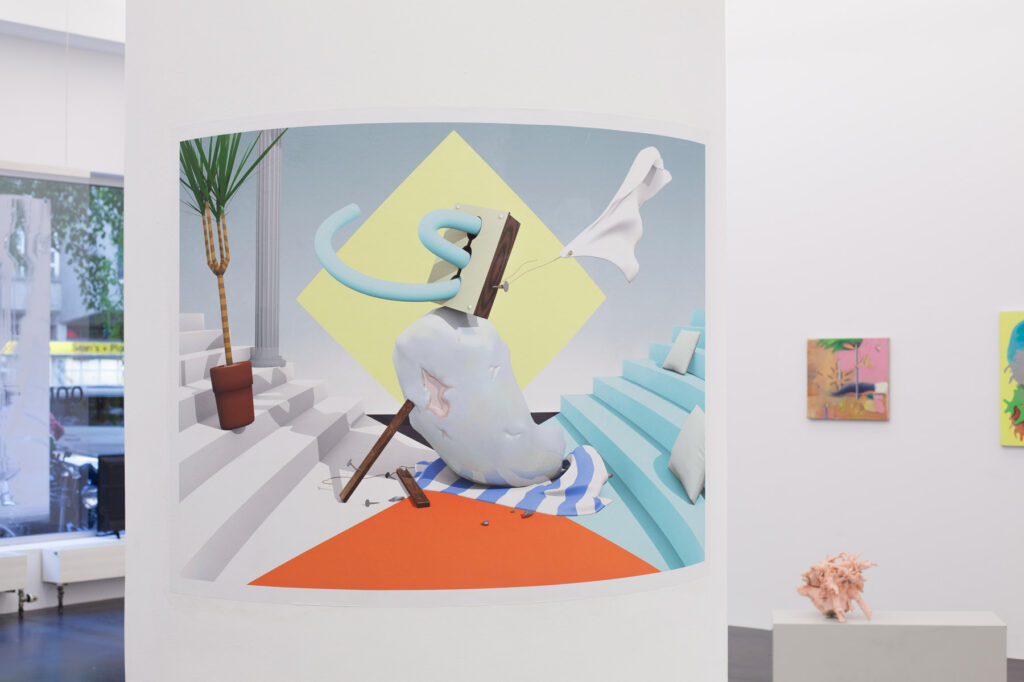

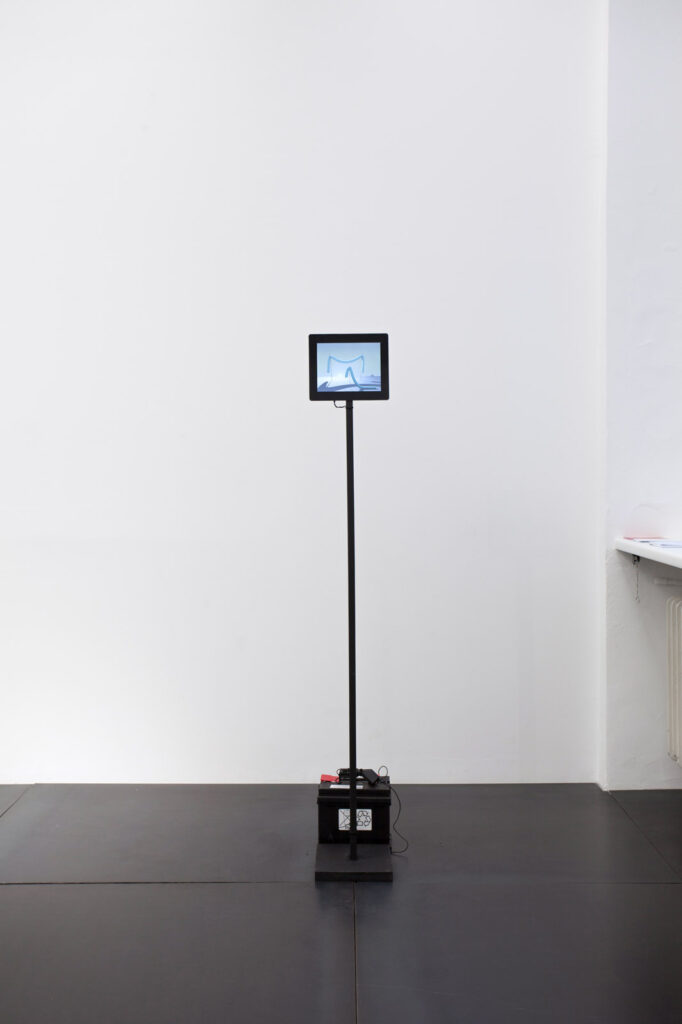
Fee Kleiss (DE), Sebastian Utzni (CH)
Löwenbräukunst, Zürich, Herrmann Germann 2019

Peer-to-peer – or P2P for short – platforms are internet platforms that enable communication and exchange on an equal basis. Only those that provide data can take data. With the opening of High Ceiling a new era of gallery reality starts at the Löwenbräu. The platform founded by Barbara Seiler with the collaboration of annex14 becomes a gallery hub which, as a multiplier, contributes to democratisation and offers young galleries, collectives and initiators the possibility of bringing together artists from diverse areas and presenting them to the art market.
The exhibition is founded on exchange, synergy and inspiration. P2P shows artists represented by both galleries as well as Herrmann Germann Conspirators. Exchange, encounters and interaction between art, gallerists and visitors are the goal. P2P is the desire to promote dialogue and encounters with the public, to stimulate discussion and break down barriers in order to meet others eye to eye.
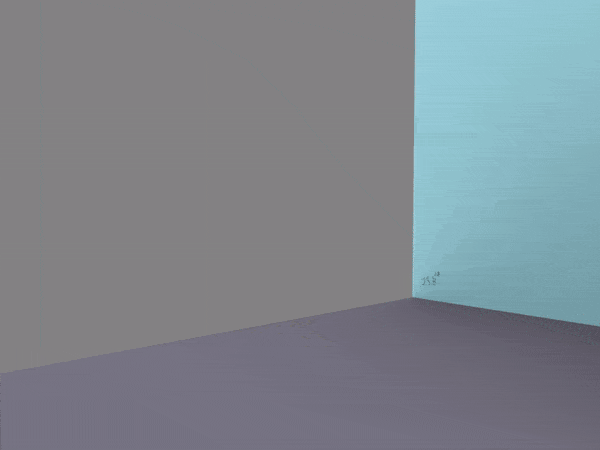

P2P hall:
Jacob Dwyer, Daniel Karrer, Jonas Baumann
Bob Eikelboom, Sara Masüger, Marcel van Eeden
Tenki Hiramatsu, Pavel Büchler Pauline Bastard
Michał Budny, Simon Callery, Ana Roldán
Video corridor with rolling screening program:
Graeme Arnfield, Jonas Baumann, Catherine Biocca, Dina Danish, Jacob Dwyer, Riley Harmon, Daniel Karrer, Jérôme Leuba, Warren Neidich, Sebastian Stumpf
Jahresausstellung, Kunstmuseum Olten, 2017

The Worlds They Wanted, Regionale 16, HeK Basel
Das Computer Programm »Tableau Vivant« fragt die Systemzeit des Computers ab und simuliert damit einen Echtzeit Tag/Nacht Rhythmus. Die Zeit lässt die auf dem Tisch stehende Plastikblume “verwelken”, bis am Ende nur noch ein kahles Gerüst überbleibt. Die Blüten der Blume dekorieren das digitale “Stillleben” gerade da, wo sie zufällig hinfallen, und machen, ähnlich einer Sanduhr, die verstrichene Zeit sichtbar. Die Arbeit bringt die traditionellen Kunstform des „Stilllebens“ in eine kontemporäre form und fügt einer virtuellen Szene, wo Zeit keine Bedeutung hat, eine Form von „Vergänglichkeit“ zu.
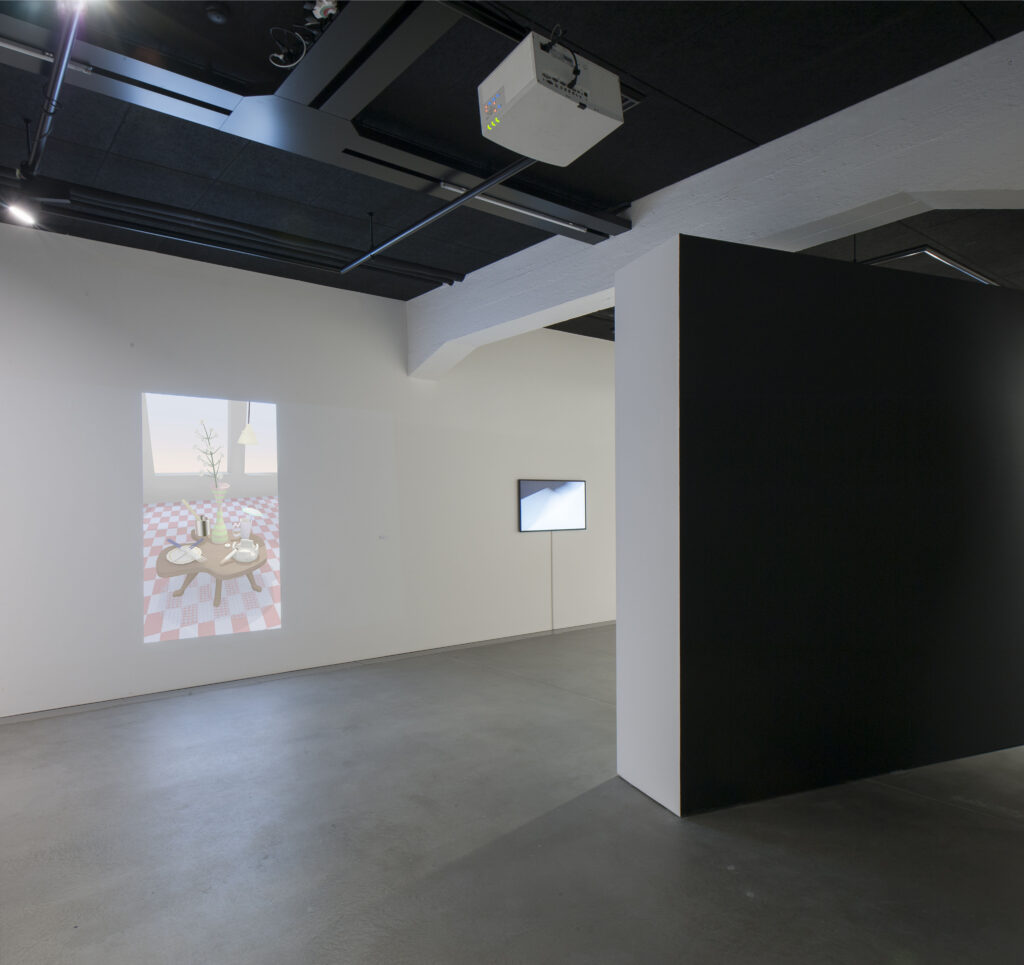
Form Follows Form Follows Form, Regionale 15, Kunsthalle Basel
As part of this year’s Regionale 15, Kunsthalle Basel is delighted to present the group show form follows form follows form, featuring new and existing works by Jonas Baumann, Samuli Blatter, Christian Falkner, Corsin Fontana, Andreas Frick, Lucie Gmünder, Daniel Göttin, Gert Handschin, Emanuel Rossetti and Petra Soder.
Patterns, determined by their cultural context, possess the capacity to be read and interpreted like texts and thus establish complex relationships among themselves and between their creators and viewers. The history and variety of the pattern as employed in the most diverse cultures and the most wide-ranging areas, such as textiles, painting, book illustration, ceramics, architecture, furniture and fashion, thereby becomes the thematic starting point of the show. Within the framework of the exhibition, which is being held in the Kunsthalle’s lower galleries, the ten artists from Basel and the surrounding area are showing paintings, drawings, videos, prints and objects that take up – each in their own individual way – patterns, textures and structures.
Alongside the question of its artistic execution, the configuration of a pattern on a surface is of great significance: social and cultural traditions, values and tastes influence the design of patterns and thereby reflect natural and man-made spaces. Deploying languages that are figurative and abstract to varying degrees, the works by the ten artists exhibit patterns and structures that produce a certain effect upon the viewer. Thus ideas are developed and communicated that draw upon the artist’s own experience and yet are able to evoke collective memories in the viewer.
The exhibition title can be read as a kind of extension of architect Louis Sullivan’s now popular axiom, “form follows function”. As a literary repetition, form follows form follows form echoes the basic structure of a pattern and at the same time makes reference to the successive presentation of different artistic positions within the five galleries at Kunsthalle Basel.
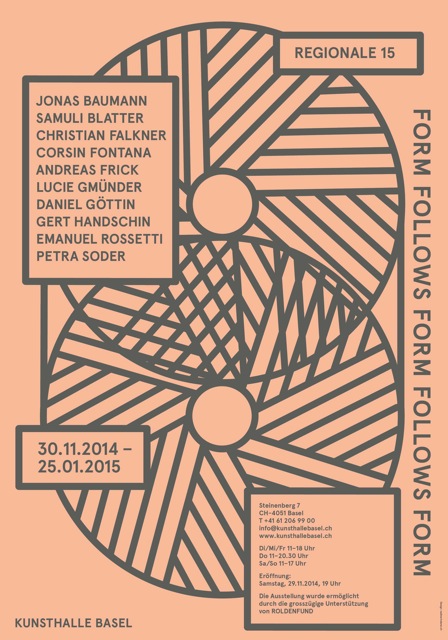
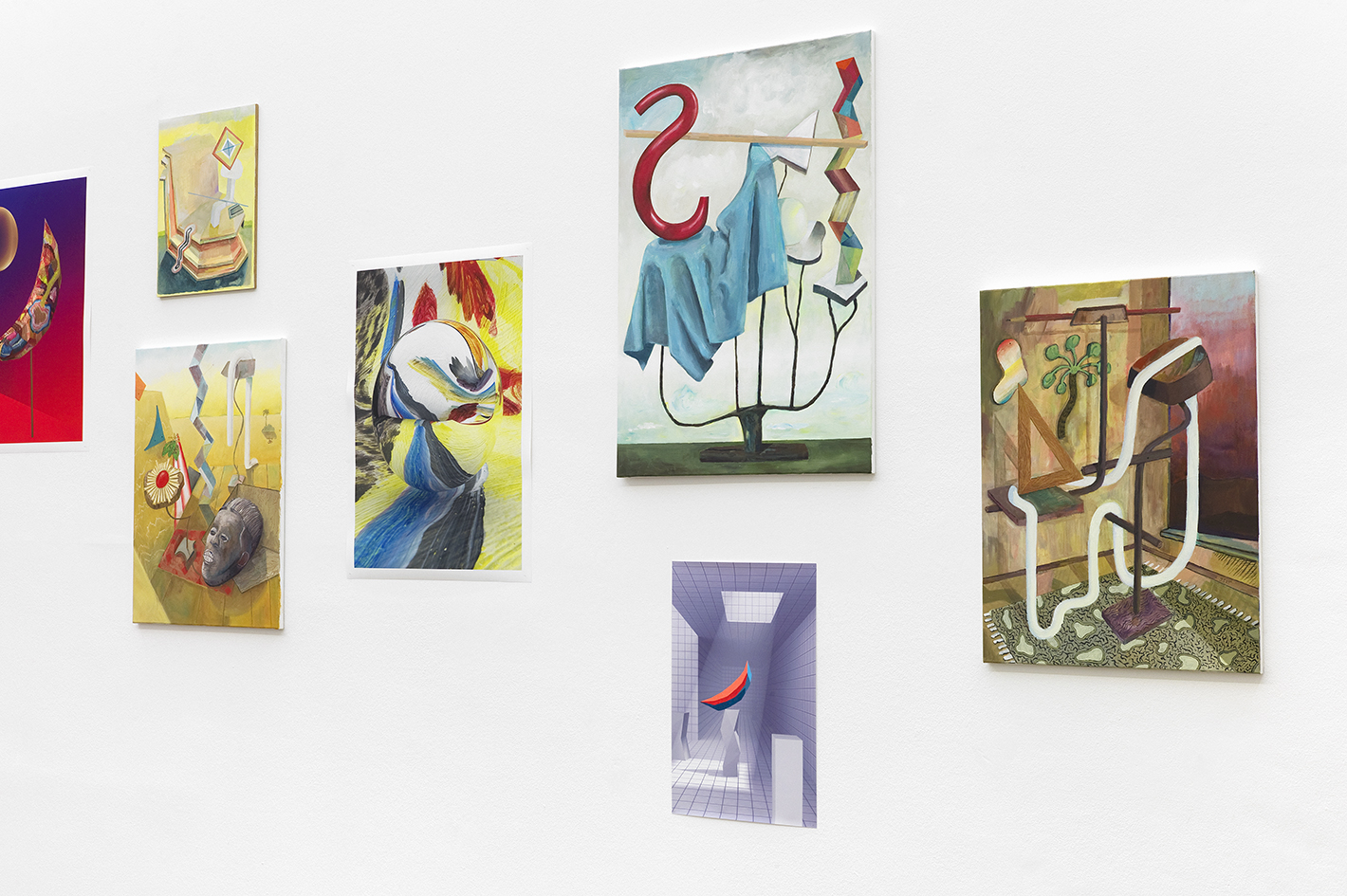
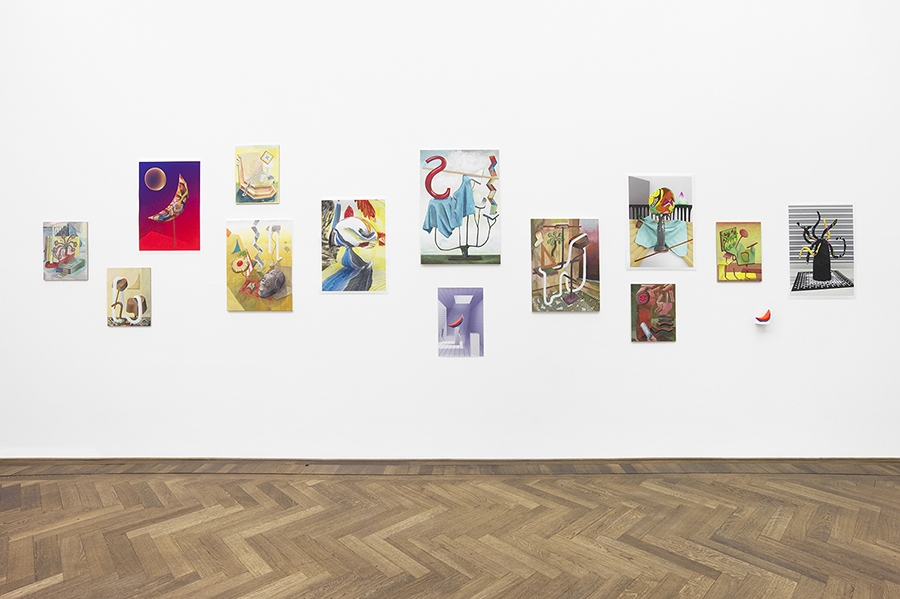
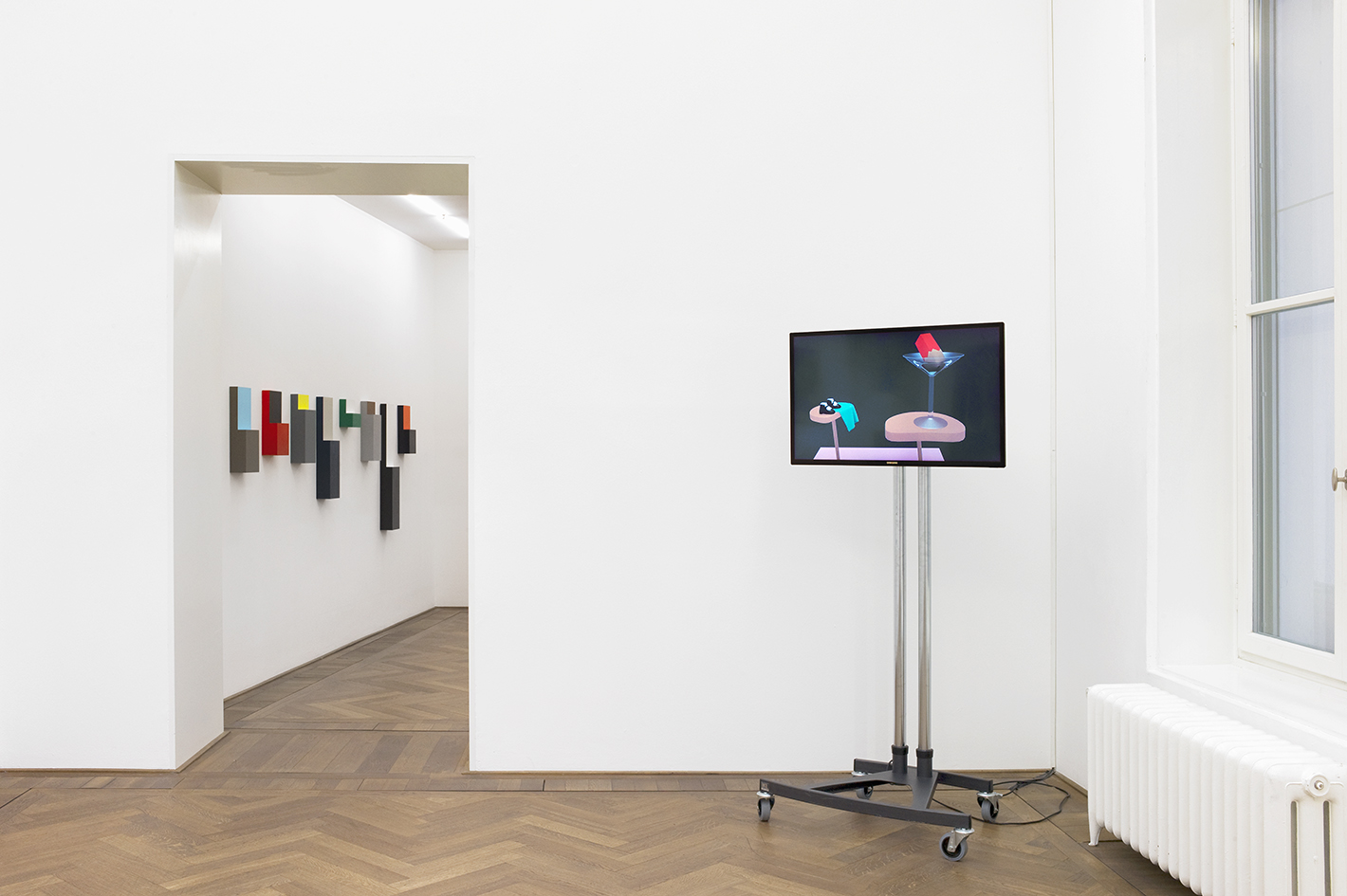
„Prototyped“ Regionale 2015, M54
Der Algorithmus des Programms ist die Skulptur an sich, da er wie eine Bauanleitung alle Informationen von jeder einzelnen der über tausend Milliarden möglichen Skulpturen in sich enthält. Diese in Echtzeit erschaffenen und nur für einen kurzen Moment sichtbaren Skulpturen sind lediglich kleine Ausschnitte eines Programmcodes, der als solcher eine übergeordnete unsichtbare “Mutterskulptur” darstellt. Durch ihre annähernd unendliche Anzahl ist es für den Betrachter unmöglich, je alle Skulpturen zu Gesicht zu bekommen. Trotzdem wird stur eine Skulptur nach der anderen “gezeigt”, so als ob es für jede davon jemanden gäbe, der sie zur Kenntnis nimmt bevor sie wieder in der Unendlichkeit verschwindet.
Der Betrachter steht hier einem klinischen Raumgefüge gegenüber, in dem Zeit und Vergänglichkeit keine Bedeutung zu haben scheinen. Er blickt auf eine potentielle “Schöpfungsgabe” des Computers, die grösser ist als die seinige und die er in seinem Ausmass nicht mehr erfassen kann. So wird er mit seiner eigenen Endlichkeit konfrontiert und in diesem Zusammenhang stellt sich einmal mehr die Frage nach der Hierarchie zwischen Mensch und Maschine.
